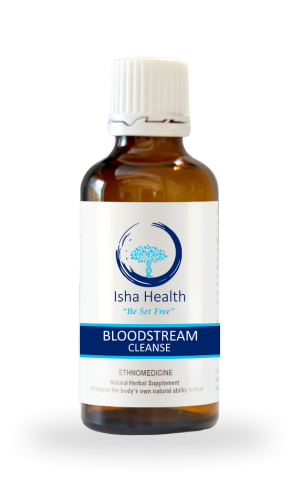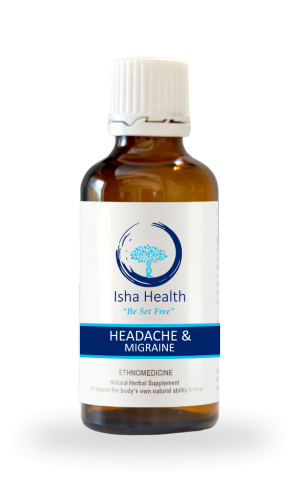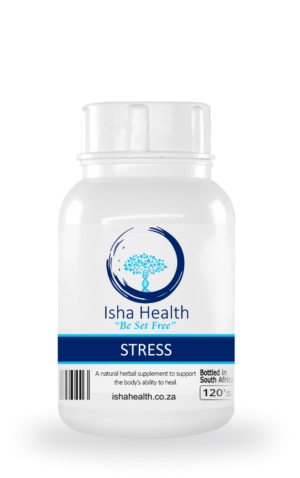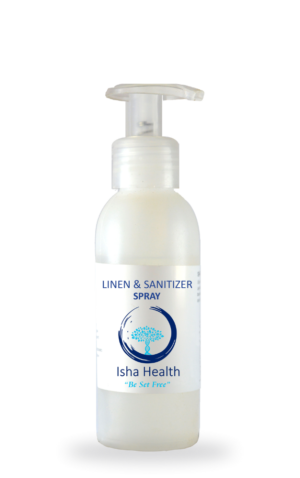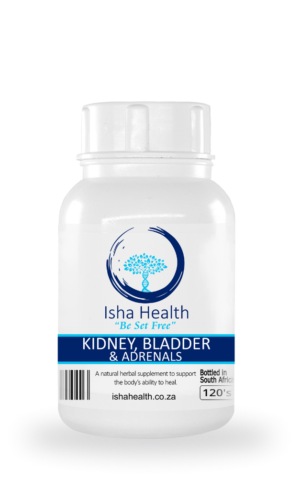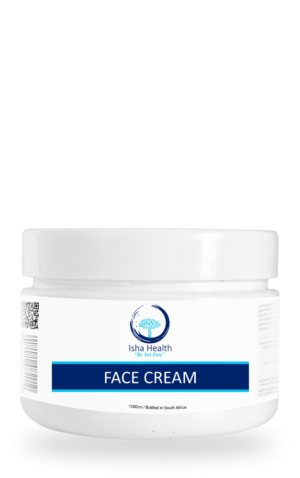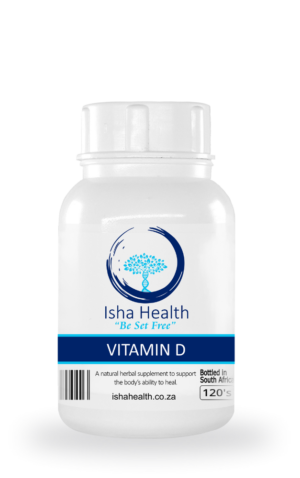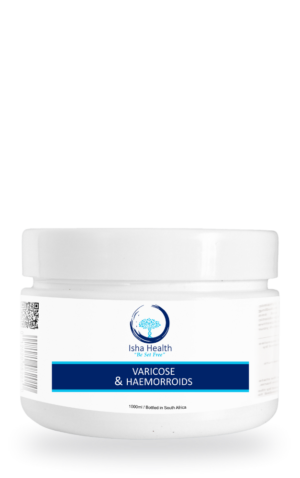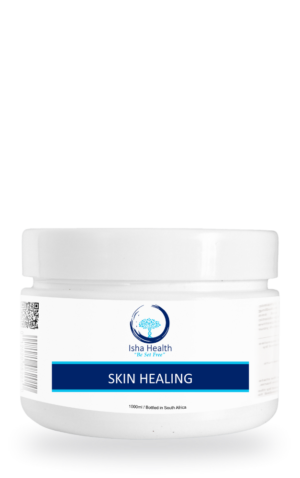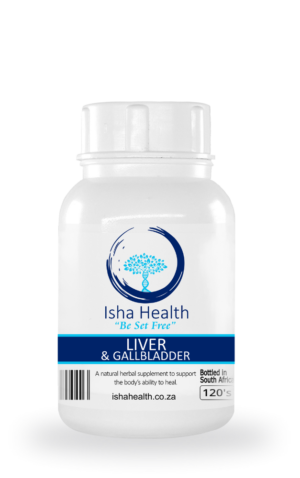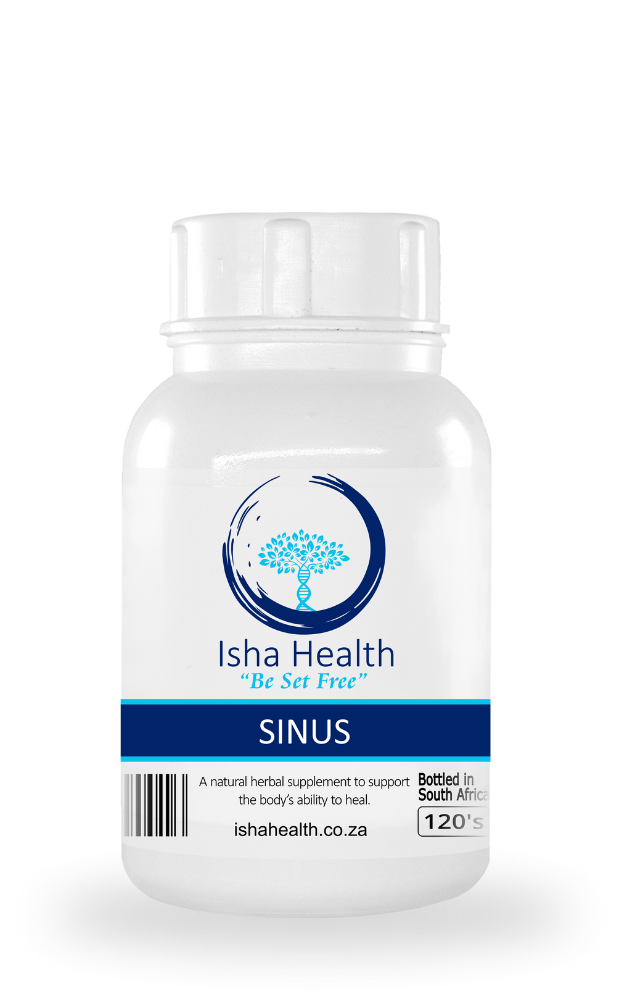
Sinus
- 3-5 working days
- Hand-Made
- Manufactured in South Africa
- 100% Natural
- 100% Herbal products
- 100% Manufacturing Guarantee
Description
Directions for Use
Ingredients
Warning
Technical Information
Our Herbal Sinus Supplement is designed to support respiratory health in a natural way. It aims to provide relief for individuals experiencing sinus discomfort, congestion, allergies, or respiratory issues.
The supplement is crafted with a blend of herbal ingredients known for their traditional uses in promoting clear breathing and sinus comfort.
2-4 x capsules 3x daily
20 minutes before meals.
Children over 6-12 years:
1x Capsule daily
Children over 12-16 years:
1x Capsule 2x daily according to age
Astragalus
Coltsfoot
Couch grass
Echinacea
Elder Berries
Eyebright
Ginseng
Hydrangea Root
Lobelia
Marshmallow Root
MSM
Plantain
Slippery Elm
Thyme
Wormwood
Other African Herbs
Astragalus: Astragalus is recognized for its potential to support the immune system, aiding the body in its natural defense against respiratory infections. It is often considered a tonic for lung health.
Coltsfoot: With properties known to soothe the respiratory system, Coltsfoot may assist the body in addressing irritation and promoting the natural removal of phlegm.
Couchgrass: Known for its anti-inflammatory and antimicrobial properties, Couchgrass may offer relief from respiratory issues by supporting the body’s natural defense mechanisms.
Echinacea: Echinacea is believed to boost immune function, potentially aiding the body in combating respiratory infections and maintaining overall respiratory health.
Elder Berries: Rich in immune-modulating properties, Elderberries are thought to assist the body in managing viral infections, including those associated with coronaviruses.
Eyebright: Acknowledged for its potential to relieve allergies and clear sinuses, Eyebright is known to support the body in soothing sensitive mucous membranes, clear sinuses and eustachian tube blockages.
Ginseng: Ginseng, with its immune-boosting and anti-inflammatory properties, supports the body’s natural healing processes, particularly in relation to respiratory health.
Hydrangea Root: With anti-inflammatory properties, Hydrangea Root may support the body in modulating inflammatory responses and preventing excessive inflammation.
Lobelia: Acting as a bronchodilator, Lobelia may support the body’s natural response to asthma attacks, bronchial spasms, and irritation.
Marshmallow Root: Known for soothing mucous membranes, Marshmallow Root may offer support for the body in addressing sinus issues, coughs, and sore throat, promoting overall respiratory health.
MSM (Methylsulfonylmethane): With anti-inflammatory effects, MSM may support the body’s natural ability to strengthen the lungs and regulate airway fluid for improved respiratory function.
Peppermint: With decongestant properties, Peppermint supports the body’s natural ability to clear sinuses, alleviate allergies, and provide relief from respiratory symptoms.
Plantain: Promoting respiratory and digestive health, Plantain is known to support the body’s natural ability to strengthen the lungs and address mucus-related issues.
Slippery Elm: Known for coating and soothing mucous membranes, Slippery Elm supports the body’s natural ability to find relief from irritation in the respiratory and digestive systems.
Thyme: With strong anti-septic and antimicrobial properties, Thyme may support the body in fighting respiratory infections and finding relief from symptoms like sore throat and asthma.
Wormwood: Linked to lung health, Wormwood supports the body in addressing respiratory symptoms associated with infectious diseases, though it should not be considered a sole solution for coronavirus or malaria.
Not suitable for pregnant women.
Protect from sunlight.
Store below 25°c
The Respiratory System:
The respiratory system is a complex network of organs and tissues that facilitates the exchange of oxygen and carbon dioxide in the body. Consisting of the nose, throat, windpipe, and lungs, this crucial system allows us to breathe. Inhaled air travels through the respiratory tract, where oxygen is absorbed into the bloodstream, and carbon dioxide is expelled. This process, essential for sustaining life, supports cellular functions and provides the body with the oxygen necessary for energy production.
- Nose and Nasal Cavity: Air enters the respiratory system through the nostrils and passes through the nasal cavity. The nasal cavity is lined with mucous membranes that help filter, humidify, and warm the incoming air.
- Pharynx (Throat): The pharynx serves as a common passageway for both air and food. It is divided into three regions: nasopharynx, oropharynx, and laryngopharynx.
- Larynx (Voice Box): The larynx contains vocal cords and is crucial for speech production. It also plays a role in preventing food and liquids from entering the trachea during swallowing.
- Trachea (Windpipe): The trachea is a tube composed of cartilage rings that provide structural support. It branches into the left and right bronchi, leading to the lungs.
- Bronchi and Bronchioles: The bronchi are airways that extend from the trachea into the lungs, branching further into smaller bronchioles. The bronchioles terminate in clusters of tiny air sacs called alveoli.
- Lungs: The lungs are the primary organs of respiration and are divided into lobes (three in the right lung, two in the left). They contain a network of bronchi, bronchioles, and alveoli where gas exchange takes place.
- Alveoli: Alveoli are small, thin-walled air sacs where oxygen from the air is exchanged for carbon dioxide from the blood. This exchange occurs across the alveolar membrane and the capillaries that surround the alveoli.
- Pleura: The lungs are enclosed in a double-layered membrane called the pleura, which reduces friction between the lungs and the chest wall during breathing.
- Diaphragm: The diaphragm is a muscular partition separating the thoracic and abdominal cavities. It plays a crucial role in breathing by contracting and relaxing to change the volume of the thoracic cavity, causing inhalation and exhalation.
- Respiratory Muscles: In addition to the diaphragm, other respiratory muscles, including intercostal muscles, assist in the process of breathing.
Sinus Problems:
These are examples of diseases and problems that can affect the sinuses.
- Sinusitis: Sinusitis is the inflammation of the sinuses, often caused by infections (bacterial, viral, or fungal), allergies, or structural issues in the nasal passages. Symptoms include facial pain or pressure, nasal congestion, headache, and nasal discharge.
- Chronic Sinusitis: When sinusitis persists for an extended period (usually more than 12 weeks), it is classified as chronic sinusitis. This condition may require more intensive and prolonged treatment.
- Allergic Rhinitis: Allergic rhinitis, commonly known as hay fever, can affect the sinuses. It is an allergic reaction to airborne allergens, leading to symptoms such as sneezing, nasal congestion, and sinus pressure.
- Nasal Polyps: Nasal polyps are noncancerous growths that can develop in the sinuses or nasal passages. They may cause sinus obstruction, leading to symptoms like congestion, loss of smell, and facial pain.
- Deviated Septum: A deviated septum occurs when the nasal septum (the wall between the nostrils) is off-center, causing airflow imbalance. This structural issue can contribute to sinus problems and difficulty breathing.
- Sinus Cysts: Cysts can form in the sinuses, causing blockages and potential infection. They may lead to symptoms such as facial pain, congestion, and discomfort.
- Sinus Headaches: Sinus headaches are often associated with sinusitis or inflammation of the sinuses. They cause pain and pressure in the forehead, cheeks, and eyes.
- Acute Sinusitis: Acute sinusitis is a short-term inflammation of the sinuses, often caused by a viral infection. Symptoms include facial pain, nasal congestion, and discharge.
- Fungal Sinus Infections: Fungal infections can affect the sinuses, particularly in individuals with weakened immune systems. Fungal sinusitis may present with persistent nasal discharge, facial pain, and sinus obstruction.
- Sinus Barotrauma: Sinus barotrauma occurs when there is a pressure difference between the inside and outside of the sinuses, often experienced during air travel or scuba diving. It can lead to sinus pain and discomfort.
- Odontogenic Sinusitis: Odontogenic sinusitis occurs when a dental infection spreads to the sinuses, causing sinusitis symptoms. It often requires coordination between dental and medical professionals for effective treatment.
- Mucormycosis (Zygomycosis): Mucormycosis is a rare but serious fungal infection that can affect the sinuses. It is more common in individuals with weakened immune systems or underlying health conditions.
- Granulomatosis with Polyangiitis (GPA): GPA is a rare autoimmune disease that can cause inflammation of the sinuses and other organs. It may lead to sinus pain, nasal ulcers, and respiratory symptoms.
Lung Problems:
These are examples of various lung problems, ranging from chronic conditions to acute infections, highlighting the importance of respiratory health and early medical intervention when needed.
- Chronic Obstructive Pulmonary Disease (COPD): COPD is an umbrella term that includes chronic bronchitis and emphysema. It is characterized by persistent airflow limitation, leading to difficulty breathing. Smoking is a primary risk factor for COPD.
- Asthma: Asthma is a chronic inflammatory condition that affects the airways, leading to symptoms such as wheezing, shortness of breath, chest tightness, and coughing. It can be triggered by various factors, including allergens and irritants.
- Lung Cancer: Lung cancer is a malignant tumor that starts in the cells of the lungs. It is often associated with smoking, but non-smokers can also develop lung cancer. Symptoms may include persistent cough, chest pain, and difficulty breathing.
- Pneumonia: Pneumonia is an infection that inflames the air sacs in one or both lungs. It can be caused by bacteria, viruses, or fungi and leads to symptoms such as fever, cough, and difficulty breathing.
- Pulmonary Fibrosis: Pulmonary fibrosis involves the scarring of lung tissue, which reduces the lungs’ ability to expand and contract. It can result from environmental exposures, certain medications, or idiopathic factors.
- Pulmonary Hypertension: Pulmonary hypertension is characterized by increased blood pressure in the pulmonary arteries, affecting blood flow to the lungs. It can result from various underlying conditions and may lead to right heart failure.
- Tuberculosis (TB): Tuberculosis is a bacterial infection that primarily affects the lungs. It can cause symptoms like persistent cough, chest pain, weight loss, and fatigue.
- Cystic Fibrosis: Cystic fibrosis is a genetic disorder that affects the respiratory and digestive systems. It leads to the production of thick and sticky mucus, causing blockages in the airways and increasing the risk of respiratory infections.
- Pulmonary Embolism: A pulmonary embolism occurs when a blood clot travels to the lungs, blocking one or more pulmonary arteries. This condition can be life-threatening and presents symptoms such as shortness of breath, chest pain, and rapid heart rate.
- Chronic Bronchitis: Chronic bronchitis is a type of COPD characterized by inflammation of the bronchial tubes, leading to persistent cough with mucus production.
- Emphysema: Emphysema is another type of COPD that involves damage to the air sacs in the lungs, reducing their elasticity and making it difficult to exhale.
- Occupational Lung Diseases: Exposure to occupational hazards such as asbestos, coal dust, and other pollutants can lead to lung diseases like asbestosis, black lung disease, and pneumoconiosis.
- Pleural Effusion: Pleural effusion is the accumulation of excess fluid in the pleural cavity, the space between the lungs and the chest wall. It can cause chest pain and difficulty breathing.
Common Respiratory Problems:
Here is a list of respiratory conditions to help individuals recognize their symptoms.
- Flu (Influenza): The flu is a contagious respiratory illness caused by influenza viruses. It typically presents with symptoms such as sudden onset of fever, chills, muscle aches, fatigue, cough, sore throat, and congestion. In severe cases, it can lead to complications such as pneumonia.
- Colds (Common Cold): Colds are viral infections affecting the upper respiratory tract, commonly caused by rhinoviruses. Symptoms include a runny or stuffy nose, sneezing, sore throat, coughing, and mild body aches. Colds are generally milder than the flu and typically resolve within a week.
- Sinusitis: Sinusitis is the inflammation of the sinus cavities, often resulting from infections, allergies, or other factors. Common symptoms include facial pain or pressure, nasal congestion, headache, and a feeling of fullness in the face. Sinusitis can be acute (short-term) or chronic (lasting longer than 12 weeks).
- Post-Nasal Drip: Post-nasal drip occurs when excess mucus drips down the back of the throat. It can be caused by various factors, including allergies, sinusitis, or irritants. Symptoms may include a persistent cough, throat clearing, and the sensation of mucus in the throat.
- Asthma: Asthma is a chronic inflammatory condition of the airways, leading to reversible episodes of wheezing, shortness of breath, chest tightness, and coughing. Triggers can include allergens, exercise, respiratory infections, and environmental factors. Asthma varies in severity, and management often involves bronchodilators and anti-inflammatory medications.
- Allergies: Allergies result from the immune system’s hypersensitivity to certain substances (allergens), leading to symptoms such as sneezing, runny or stuffy nose, itchy or watery eyes, and skin reactions. Common allergens include pollen, dust mites, pet dander, and certain foods. Allergic reactions can be managed with antihistamines and other medications.
Viral and bacterial infections are two distinct types of infections caused by different microorganisms, and they can affect the respiratory system differently. Here are some key differences between viral and bacterial infections in the context of respiratory illnesses.
The difference between a Viral infection and Bacterial infection:
Viral Infection:
Viruses are incredibly small infectious agents that cause viral infections. Unlike bacteria, they consist of genetic material (either DNA or RNA) surrounded by a protein coat. Viruses are much smaller than bacteria and cannot survive or replicate on their own. Instead, they rely on the host cells of living organisms, such as humans, animals, or plants, to reproduce. When a person is infected with a virus, the virus invades their cells, hijacks the cell’s machinery to replicate itself, and then spreads to other cells. Common respiratory viral infections include the flu, the common cold, and respiratory syncytial virus (RSV).
The treatment for viral infections often involves antiviral medications that target specific stages of the viral life cycle. However, in many cases, supportive care, including rest, hydration, and symptom relief, is the primary approach. Viral illnesses typically have a relatively short duration, with symptoms resolving within a week or two. Still, some viruses can cause more severe and prolonged illnesses.
Viruses spread through respiratory droplets, contact with contaminated surfaces, or, in some cases, through vector organisms like mosquitoes for certain viruses. Preventive measures for viral infections include vaccines, regular hand hygiene, and respiratory etiquette to minimize the spread of viruses.
Bacterial Infection:
Bacteria are single-celled microorganisms with a more complex cellular structure than viruses. Unlike viruses, bacteria can survive and replicate independently. Bacterial infections occur when harmful bacteria invade the body, leading to various illnesses. In the respiratory system, bacterial infections can cause conditions such as bacterial pneumonia, bronchitis, and bacterial sinusitis.
The treatment for bacterial infections involves antibiotics, which are substances that can kill or inhibit the growth of bacteria. Antibiotics are specific to bacterial organisms and are generally ineffective against viral infections. The duration of bacterial infections varies, depending on the type of bacteria and the individual’s immune response. Antibiotic treatment typically shortens the duration of bacterial infections.
Bacterial infections can spread through respiratory droplets, contact with infected individuals, or exposure to contaminated surfaces. Preventive measures for bacterial infections include vaccines for diseases like pertussis (whooping cough) and certain types of pneumonia, as well as good hygiene practices and infection control measures to minimize bacterial spread.
Problems caused by a Post-Nasal drip:
A sinus drip, also known as post-nasal drip, is a condition where excess mucus produced in the nasal passages and sinuses accumulates and drips down the back of the throat. This process is a response to various factors such as infections, allergies, irritants, or changes in temperature. Here’s an explanation of the process.
- Stimulation of Mucus Production: The process often begins with some form of irritation or stimulation in the nasal passages and sinuses. This can be triggered by infections, allergies, or irritants such as smoke or pollutants.
- Increased Mucus Flow: In response to the irritation, the mucous glands in the nasal passages and sinuses produce a larger volume of mucus than usual. This mucus is intended to trap and remove irritants or pathogens causing the initial irritation.
- Thickened Mucus: In cases of inflammation or infection, the quality of the mucus may change. It can become thicker and more viscous, making it more challenging for the body to clear.
- Impaired Mucus Clearance: As the excess mucus accumulates in the nasal passages, it can disrupt the normal clearance mechanisms. The cilia (hair-like structures) in the respiratory tract, which usually move mucus toward the throat, may struggle to effectively clear the thicker mucus.
- Post-Nasal Drip: The accumulated and thickened mucus eventually starts to drip down the back of the throat. This is known as post-nasal drip. Individuals may feel the constant need to clear their throat or may experience a sensation of mucus trickling down.
- Symptoms and Effects: Post-nasal drip can lead to various symptoms, including throat irritation or soreness, coughing (especially at night), hoarseness, and a feeling of a lump in the throat. It may also contribute to bad breath.
- Contributing to Lower Respiratory Issues: If the excess mucus reaches the lower respiratory tract, it can contribute to issues such as lower respiratory catarrh, characterized by inflammation in the bronchial tubes and lungs. This may result in symptoms like chest congestion and persistent cough.
Addressing the underlying cause, whether it’s an infection, allergies, or irritants, is crucial in managing sinus drip. Treatment options may include medications (antibiotics, antihistamines), nasal irrigation, and lifestyle adjustments to minimize exposure to irritants. If symptoms persist or worsen, it’s advisable to consult a healthcare professional for proper evaluation and guidance.
Ingredients which are traditionally used for this disorder
Technical info:
Astragalus: Astragalus is known for its immune-modulating properties attributed to active compounds such as polysaccharides and flavonoids. These constituents stimulate T-cell and natural killer cell activity, enhancing the body’s defense against respiratory infections. Astragalus acts as a lung tonic by promoting the integrity of respiratory epithelial cells, providing crucial support to the immune system in the context of lung health.
Bilberry: Rich in anthocyanins and flavonoids, bilberry exhibits antiviral, anti-inflammatory, and antiseptic properties. Its role in strengthening veins, arteries, and addressing venous insufficiency is notable. The herb also provides support to the blood-brain barrier, contributing to overall vascular health.
Coltsfoot: Coltsfoot contains alkaloids, mucilage, and tannins, imparting antitussive, expectorant, and anti-inflammatory effects. Its action on the lower respiratory system is notable, soothing mucus linings and facilitating the removal of thick phlegm. This mechanism is particularly beneficial in addressing chronic respiratory conditions such as asthma and bronchitis.
Couchgrass: Active components in couchgrass include glycosides, mucilage, and essential oils, contributing to its anti-inflammatory, demulcent, and antimicrobial properties. The herb is effective in mitigating irritation, inflammation, and respiratory infections, offering relief from symptoms such as cough, fever, sore throat, and bronchitis.
Echinacea: Echinacea contains alkamides, polysaccharides, and flavonoids, conferring immunostimulant, anti-inflammatory, and antiviral properties. Its mechanism involves enhancing immune function by stimulating white blood cell production. This immune modulation is relevant for respiratory health, especially in combatting infections affecting the respiratory system.
Elder Berries: Rich in anthocyanins, flavonoids, and vitamins, elderberries exhibit antiviral and immune-modulatory properties. Their role in treating viral infections, including those associated with coronaviruses, is noteworthy. Elderberries contribute to immune system regulation and may aid in the management of respiratory infections.
Eyebright: Active ingredients like iridoid glycosides and flavonoids make eyebright anti-inflammatory, astringent, and antioxidant. Its efficacy in alleviating allergies lies in soothing hypersensitive mucous membranes in the eyes, ears, nose, and throat. Additionally, the herb clears sinuses, providing relief from respiratory discomfort.
Ginseng: Ginseng’s active ingredients, ginsenosides, and polysaccharides impart adaptogenic, anti-inflammatory, and immunomodulatory properties. Its influence on cell-mediated immunity is crucial for healing and tissue repair, making it relevant in the context of respiratory health. The herb also exhibits anti-inflammatory effects, potentially reducing symptoms of respiratory tract infections.
Hydrangea Root: Containing hydrangenol and saponins, hydrangea root exhibits anti-inflammatory and immunomodulatory properties. Its role as a TH17 blocker is noteworthy, preventing autoimmune reactions and cytokine storms. This mechanism contributes to the modulation of inflammatory responses, potentially mitigating excessive inflammation in various diseases.
Juniper Berries: Active components like terpenes and flavonoids make juniper berries antimicrobial, diuretic, and anti-inflammatory. With antihistamine properties, the herb addresses infections in the respiratory system, providing relief from symptoms such as coughs and colds.
Lobelia: Lobelia, containing lobeline and alkaloids, acts as a bronchodilator, antispasmodic, and expectorant. Its specific role in treating asthma attacks, bronchial spasm, and irritation is notable. The herb’s bronchodilatory effects contribute to improved airflow in the respiratory passages.
Marshmallow Root: With mucilage and flavonoids as active ingredients, marshmallow root exhibits demulcent and anti-inflammatory properties. Its efficacy in addressing sinus issues, coughs, and sore throat lies in its ability to soothe and heal mucous membranes. Additionally, the herb aids in building up mucous membranes throughout the body.
Moringa: Rich in flavonoids, polyphenols, and vitamins, moringa showcases anti-inflammatory, bronchodilator, and nutritive properties. Its role in reducing the severity of asthma attacks and protecting against bronchial constrictions is notable. The herb’s highly nutritious profile contributes to overall respiratory health and function.
MSM (Methylsulfonylmethane): Containing sulfur as its active ingredient, MSM exhibits anti-inflammatory and analgesic properties. Its role in strengthening the lungs and regulating airway fluid contributes to improved oxygen and carbon dioxide exchange. Additionally, MSM has been utilized in the treatment of infectious diseases, including COVID-19, due to its anti-inflammatory effects.
Olive Leaf: Olive leaf, with active ingredients like oleuropein and polyphenols, serves as an antioxidant and antimicrobial agent. Its efficacy against viral infections, including coronaviruses, is notable. The herb’s antioxidant properties contribute to overall health, including respiratory well-being.
Peppermint: Peppermint, rich in menthol and menthone, exhibits anti-inflammatory, decongestant, and antispasmodic properties. Its role in clearing sinuses, alleviating allergies, and providing relief from symptoms such as fever and headaches is noteworthy. Additionally, peppermint acts as a decongestant, improving airflow in the respiratory passages.
Plantain: Containing mucilage and flavonoids, plantain manifests demulcent and expectorant properties. Its efficacy in strengthening the lungs and the digestive system is notable. The herb addresses mucus-related issues, contributing to overall respiratory and digestive health.
Slippery Elm: With mucilage and flavonoids as active ingredients, slippery elm acts as a demulcent and anti-inflammatory agent. Effective for coughs, sore throat, and gastrointestinal issues, the herb coats and soothes mucous membranes throughout the body. Its demulcent properties provide relief from irritation in the respiratory and digestive systems.
Thyme: Thyme, with strong anti-septic and antimicrobial properties, is effective against respiratory infections, whooping cough, sore throat, asthma, and laryngitis. Its active constituents contribute to its antibacterial and antiviral effects, providing relief from respiratory symptoms.
Wormwood: Containing active ingredients effective against symptoms of coughs, colds, influenza, and fever, wormwood is relevant in the context of COVID-19. While linked to lung health, it should not be considered the sole solution for coronavirus or malaria. Wormwood’s constituents may contribute to its potential benefits in addressing respiratory symptoms associated with infectious diseases.

